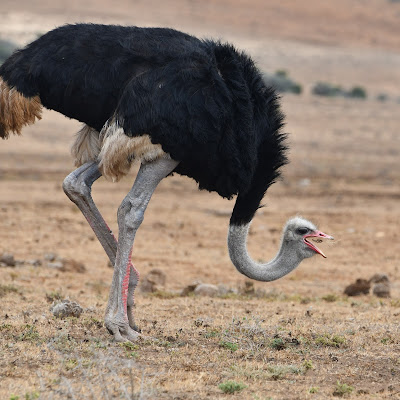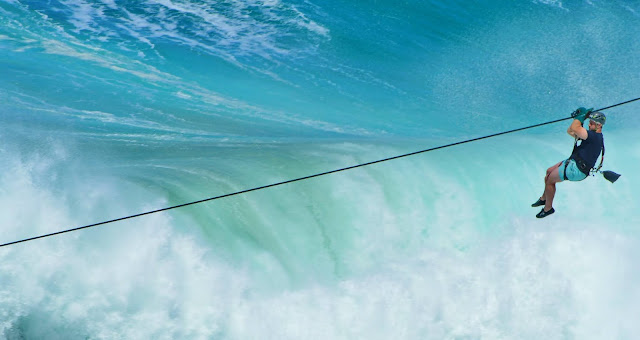St Francis Bay
Cape St Francis is slightly off the beaten track off the N2 in the Eastern Cape.
However, it offers quaintness in the various areas of St Francis Bay, Port St Francis and Cape St Francis.
The canals are picturesque and make one want to move in and buy a boat for leisurely cruising!
Houses are white with thatch roofs and there have been a number of disastrous fires in years gone by. But the tranquillity of the canals is most appealing to those of us living in the city suburbs!
The canals are bordered by the Kromme River which is navigable for 9km. Cruises are available on the canals.
There are numerous walking trails in the town - some easy, some slightly more difficult.
Try just one or try them all, depending how long your stay is in this rather unique part of the Eastern Cape.
The Two Harbours walk starts near the Community Garden in Harbour Road (Granny's Pool) and goes all the way to Port St Francis. The distance is 2.5km one way. With many restaurants in the harbour area, refreshments are available should you wish to walk back to your car!
Port St Francis, one of a few privately owned harbours in South Africa, is also home to a diversity of restaurants, retail outlets, commercial offices, residential property, self catering accommodation and guest houses.
A mere hour’s drive from Port Elizabeth on the eastern gateway to the Garden Route, Port St Francis is surrounded by the surfing mecca of Jeffreys Bay, the Baviaanskloof Wilderness Area, the Gamtoos River Valley and the Tsitsikamma. The privately owned Port, together with the beautiful Cape St Francis, is part of St Francis Bay in a region known as the Kouga.
Port St Francis, a working harbour is home to a large fleet of squid, hake and pilchard vessels with more moorings filled by charter boats, deep sea fishing boats and yachts from all over the world. The moorings are surrounded by residential penthouses and apartments in a Mediterranean building style. A business centre with offices, restaurants and other retail outlets finishes the picture.
The launching of boats, loading and offloading of vessels, crew fixing large fishing nets and fishermen coming back with their daily catches are quite intriguing and fascinating to the visitor and holiday maker. This all contributes to the unique vibe of Port St Francis, giving the first time visitor enough reason to come back, again and again"
Courtesy www.portstfrancis.org
We walked around the harbour and residential complex, later enjoying a meal while watching the lights come on from the chukka boats just offshore. These boats can stay out for weeks, despite being so close to shore. We saw a crew returning after a stint at sea, all looking very much in need of a warm shower and a comfy bed!
There are numerous restaurants in the harbour area so have a browse and decide which option looks promising to your taste buds!
Another area to explore, where there are also easy paths, is the Seal Point Nature Reserve, the Irma Booysen Nature Reserve and the Cape St Francis Nature Reserve.
The Seal Point Lighthouse was built between 1875 and 1878 and cost the grand sum of GBP 20,000.00. The air is fresh with the sea breezes and the walk goes in both directions.
Cape St Francis is known for incredible surfing spots. The village gained fame in the 1966 Documentary "The Endless Summer"
The swell is caused by low pressure systems that form between Antarctica and the southern tip of Africa.
The South West swell wraps around Seal Point and, together with an offshore wind, the surfing becomes world class.
Cape St Francis also featured in the movie The Perfect Wave (2014) which starred Scott Eastwood.
So, if you love surfing, this is one of the spots in South Africa that should be on your bucket list!
Despite the fact that beaches were off limits during Covid 19, the surfers were still out on the waves. This made headlines in the St Francis Chronicle in Jan 2021 as folk defied the ban. I suppose it is tough for surfers to stay out of the sea!
Thankfully, beaches are now all open.
There are many options and it is always best to explore and enjoy the local flavour!
Visit Bruce's Ocean Museum and Cafe at Granny's Pool, Harbour Road
Try and find the remains of the boiler from HMS Osprey, wrecked in 1867. This was a four-gun wooden steam naval battle-sloops built in Britain. Stick to the shoreline at low tide.
You can also try and spot the remains of the Cape Recife (1929). This lies west of the Seal Point Lighthouse and is only visible at low tide.
Try and find your own perfect wave at Bruce's Beauties!
SUP in the canals or just enjoy some craft beer together with seafood.
For a short excursion away from Cape St Francis, do the 22.5 km drive to Oyster Bay. This is a rather bumpy gravel road with many windfarms along the way.
Stop the car and listen to the wind whistling through these giant wind turbines. They are truly huge when seen up close and personal!
Oyster Bay is a small hamlet with homes ranging from very small and basic to large and pretentious. The sea was very tough when we visited and it did not look safe for swimming but the beach is long and ideal for a brisk walk in the invigorating sea breezes.
We loved the sand dunes and enjoyed walking to the top! Gritty sand got into the teeth and into the hair but, what the heck, it was well worth the slog uphill!
| http://www.flickr.com/photos/bradclinphotography |



























































